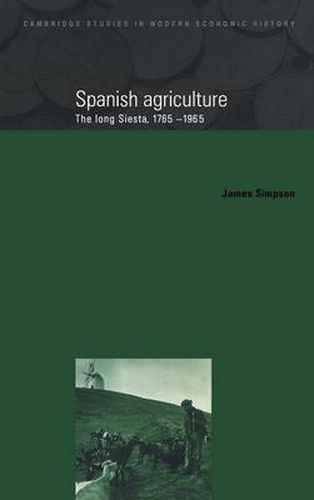Readings Newsletter
Become a Readings Member to make your shopping experience even easier.
Sign in or sign up for free!
You’re not far away from qualifying for FREE standard shipping within Australia
You’ve qualified for FREE standard shipping within Australia
The cart is loading…






Spanish Agriculture: The Long Siesta, 1765-1965 is the first major study in English of Spanish agrarian history. James Simpson examines how traditional agriculture responded to population growth and the integration of commodity markets, emphasising both Spain’s regional variations and its context in Europe. Using statistical data as well as his wide knowledge of the recent secondary literature, Simpson argues that decisive changes in farming techniques only occurred at the start of this century. He rejects arguments that slow growth can be explained by poor resources or inefficient farmers. Indeed, farmers were quick to change when they had market opportunities, but development was interrupted by the Spanish Civil War and subsequent short-sighted government policies, only resuming in the 1950s. This comprehensive study will be of relevance to students and scholars of historical geography and agrarian history, as well as economic history.
$9.00 standard shipping within Australia
FREE standard shipping within Australia for orders over $100.00
Express & International shipping calculated at checkout
Spanish Agriculture: The Long Siesta, 1765-1965 is the first major study in English of Spanish agrarian history. James Simpson examines how traditional agriculture responded to population growth and the integration of commodity markets, emphasising both Spain’s regional variations and its context in Europe. Using statistical data as well as his wide knowledge of the recent secondary literature, Simpson argues that decisive changes in farming techniques only occurred at the start of this century. He rejects arguments that slow growth can be explained by poor resources or inefficient farmers. Indeed, farmers were quick to change when they had market opportunities, but development was interrupted by the Spanish Civil War and subsequent short-sighted government policies, only resuming in the 1950s. This comprehensive study will be of relevance to students and scholars of historical geography and agrarian history, as well as economic history.